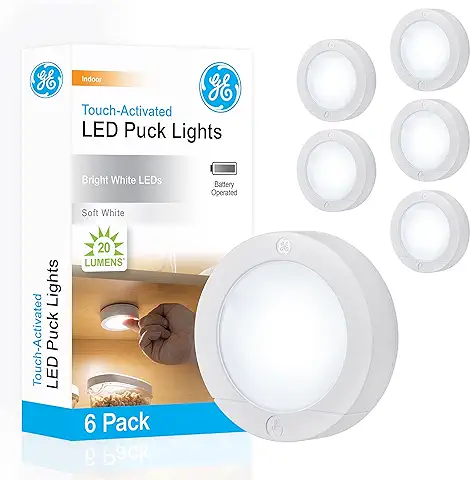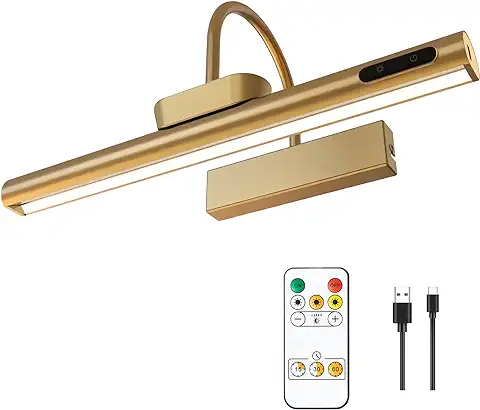Smart Lighting Technology has revolutionized the way we illuminate our homes. It’s not just about turning lights on and off anymore; it’s about convenience, energy efficiency, and control. In this article, we’ll explore the world of smart lighting, wireless options, and the best ways to remotely control your house lights.
Smart Lighting Technology Explained
Imagine being able to control your lights from your smartphone or even using voice commands. This is where smart lighting technology comes in. It uses wireless communication protocols like Wi-Fi, Bluetooth, Zigbee, and Z-Wave to connect your lights to a central hub or your smartphone. This connectivity allows for a wide range of control options and opens the door to numerous benefits.
Wireless Lights Types
When it comes to wireless lights, there are several types to choose from, each with its unique advantages. These include
- Wi-Fi-based lights: which offer a direct connection to your home network; Bluetooth-based lights for close-range control.
- Zigbee-based lights: which create a mesh network for extended coverage,
- Z-Wave-based lights: are known for their energy efficiency and reliability. The type you choose depends on your specific needs and preferences.
Few other Wireless Lights Types:
- wireless led lights

- wireless trailer lights

- wireless picture lights

Best Remote Control House Lights
Selecting the best remote control house lights involves considering factors like compatibility, ease of use, and functionality. Brands like Philips Hue, LIFX, and TP-Link offer a wide range of products designed for different purposes and preferences. Research and customer reviews can help you identify the best fit for your home.
Are You Willing to Buy a Smart Light Bulb?
- Buy a Wi-Fi smart light bulb Now
- Buy a Wi-Fi smart camera light bulb
- Buy a Wi-Fi smart camera light bulb instructions
- Buy a Wi-Fi smart camera light bulb app
How to Control Your House Lights Remotely
There are several methods for controlling your house lights remotely. You can use dedicated remote control apps provided by the lighting manufacturer, voice control through devices like Amazon Alexa or Google Assistant, or even physical remote controls and switches. The key is to choose a method that aligns with your smart home ecosystem and personal preferences.
Adding a Remote Control to Any Light Fixture
The good news is that you can add remote control capabilities to almost any light fixture in your home. With the right tools and equipment, it’s possible to retrofit your existing lights for remote control. This can be a cost-effective way to upgrade your lighting without replacing fixtures entirely. We’ll provide a step-by-step guide to help you get started.
Controlling Home Lights with a Phone
Controlling your home lights with your phone is a popular choice among smart homeowners. Setting up a smartphone control system is relatively easy, and there are numerous apps available for both iOS and Android devices. We’ll walk you through the process and offer tips for troubleshooting common issues.
Automating Outside House Lights
Outdoor lighting plays a crucial role in security and ambiance. Discover how to automate your outside house lights using sensors, timers, and integration with security systems. Automated outdoor lighting not only enhances safety but also adds a touch of elegance to your home’s exterior.
Device for Controlling Lights from One Location
Centralized control devices, such as smart hubs and controllers, can streamline the management of all your smart lights from one location. Learn how these devices work and how they can simplify your lighting control experience.
Controlling a Light from Two Locations
Controlling a light from two or more locations is a common requirement in larger rooms or hallways. We’ll explain the wiring diagrams and switches needed for three-way and four-way setups, ensuring you have the flexibility you need.
Types of Lighting Control Systems
Finally, we’ll briefly explore the five main types of lighting control systems, from manual control systems to advanced smart lighting solutions. Understanding these systems will help you choose the right one for your home and lighting preferences.
Conclusion
Smart lighting technology and remote-control options have transformed the way we illuminate and interact with our homes. The convenience, energy savings, and versatility they offer are reshaping the modern household. As we wrap up this exploration, let’s recap some of the key takeaways:
- Smart Lighting Technology: It leverages wireless communication protocols like Wi-Fi, Bluetooth, Zigbee, and Z-Wave to create a connected lighting ecosystem that can be controlled remotely.
- Wireless Lights Types: The choice of wireless lights, including Wi-Fi-based, Bluetooth-based, Zigbee-based, or Z-Wave-based, depends on your specific requirements and preferences.
- Best Remote Control House Lights: Leading brands like Philips Hue, LIFX, and TP-Link offer a diverse range of products to suit various needs and preferences.
- Remote Control Methods: You have options like dedicated apps, voice control, and physical remote controls to manage your lights remotely. Choose the one that aligns with your smart home setup.
- Adding Remote Control: You can retrofit existing light fixtures for remote control, providing a cost-effective way to upgrade your home’s lighting.
- Controlling Lights with Your Phone: Smartphone control is a popular and convenient choice. Setup is straightforward, and there are numerous apps available for both iOS and Android devices.
- Automating Outdoor Lights: Enhance safety and ambiance by automating your outdoor lights with sensors, timers, and integration with security systems.
- Centralized Control Devices: Centralized control devices like smart hubs simplify the management of all your smart lights from one location, offering a streamlined experience.
- Multi-Location Control: For rooms or hallways requiring control from two or more locations, understand the wiring diagrams and switches needed for three-way and four-way setups.
- Types of Lighting Control Systems: Gain insights into various lighting control systems, from manual to advanced smart solutions, to make informed decisions for your home.
Frequently Asked Questions
Q1: How many lights can be connected to one switch?
Ans: The number of lights that can be connected to one switch depends on several factors, including the type of switch, the wattage or amperage rating of the switch, and the total electrical load of the lights.
Here are some general guidelines:
- Single-Pole Switch: A standard single-pole switch in a residential setting is typically rated for 15 or 20 amperes. In most cases, you can safely connect multiple light fixtures to a single-pole switch as long as the combined wattage of the lights does not exceed the switch’s amperage rating. For example, if you have a 15-amp switch, you could connect several LED or CFL lights with a total wattage well below 15 amps.
- Three-Way or Four-Way Switches: In a multi-way switch setup (three-way or four-way), you typically have multiple switches controlling the same lights from different locations. The number of lights you can connect to this setup depends on the wiring configuration and the rating of the switches. Each switch in the circuit should be able to handle the total load of the lights.
- Dimmer Switches: Dimmer switches are commonly used to control the brightness of lights. Like standard switches, the number of lights you can connect to a dimmer switch depends on its amperage rating and the total wattage of the lights. Some dimmer switches are designed to handle higher loads and can control more lights.
- Circuit Load: It’s important to consider the total electrical load on the circuit that the switch is a part of. Electrical codes typically specify a maximum load for a circuit, and this includes all the lights and devices connected to that circuit. Exceeding this load can cause circuit overloads and tripped breakers.
- LED and CFL Lights: If you’re using energy-efficient LED or CFL (compact fluorescent) lights, you can typically connect more of them to a single switch because they have lower wattage compared to incandescent bulbs.
- Local Electrical Codes: Always follow local electrical codes and regulations when wiring or connecting lights to switches. These codes may vary by location and may have specific requirements regarding the number of lights on a circuit
Q2: How does a wireless light switch work?
Ans: A wireless light switch, often referred to as a wireless or remote-controlled light switch, operates without the need for physical wiring between the switch and the light fixture it controls. Instead, it uses wireless technology to send signals from the switch to a receiver or controller, which then activates or deactivates the light. Here’s how a wireless light switch typically works:
Wireless Communication Technology: The wireless light switch is equipped with wireless communication technology, such as radio frequency (RF), Wi-Fi, Bluetooth, Zigbee, or Z-Wave. The specific technology used may vary depending on the switch’s design and purpose.
Switch Configuration: The wireless switch can have various configurations, including single-pole (controls one light or group of lights), three-way (used in conjunction with other switches to control lights from multiple locations), or even dimmer switches for controlling light brightness.
Transmitter: When you press the button on the wireless switch, it sends a signal using the chosen wireless technology. This signal contains information about the desired action, such as turning the light on or off, adjusting brightness, or changing color (in the case of smart color-changing bulbs).
Receiver or Controller: At the light fixture or electrical junction box, there is a corresponding receiver or controller device that is compatible with the wireless switch. This receiver is designed to receive signals from the switch and translate them into commands for the connected light fixture.
Communication and Control: The receiver decodes the signal from the switch and instructs the light fixture to perform the desired action. For example, if you press the “on” button on the wireless switch, the receiver will send power to the light fixture, turning it on. If you press “off,” it will cut power to the fixture, turning it off.
Power Source: Wireless switches and receivers require a power source. Some switches are battery-powered, while others may be wired into the electrical system or use a combination of battery and electrical power.
Integration with Smart Home Systems (Optional): Many modern wireless light switches are part of a larger smart home ecosystem. They can be connected to a central hub or controlled through a smartphone app. This integration allows for additional features like remote control via a mobile device, voice control through virtual assistants like Alexa or Google Assistant, and automation based on schedules or sensor inputs.
Security and Encryption (for Smart Switches): To ensure the security of wireless communication, especially in the case of smart switches, encryption and authentication protocols are often employed. This helps prevent unauthorized access to your lighting control system.
Q3: What size breaker do I need for LED lights?
Ans: For LED lights in a residential setting, you typically need a 15-amp circuit breaker for smaller loads and a 20-amp circuit breaker for larger loads. LED lights are energy-efficient and have low power consumption, so they rarely exceed the capacity of these standard residential circuits. Always ensure the total load remains well below the circuit’s maximum capacity for safety.
Q4: Is there an app to control your lights?
Ans: Yes, there are many apps available for controlling lights, especially if you have smart lighting systems or compatible devices. These apps allow you to manage your lights remotely using your smartphone or tablet. Here are a few examples:
- Philips Hue
- LIFX
- TP-Link Kasa
- SmartThings
- Apple HomeKit
- Google Home
- Amazon Alexa
- Smart Lighting Manufacturer Apps
- Third-Party Home Automation Apps
Q5: how to wire a wireless light switch?
Ans: Wiring a wireless light switch involves:
- Turning off power to the circuit.
- Removing the old switch (if applicable).
- Installing the receiver in the electrical box.
- Connecting wires to the receiver (hot/live, neutral, ground).
- Installing the wireless transmitter (wall switch or remote).
- Testing the switch.
- Restoring power and configuring if necessary.
Ensure safety and follow manufacturer instructions. If unsure, consult an electrician.
Related Topic: Christmas Decorating Lights



